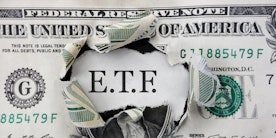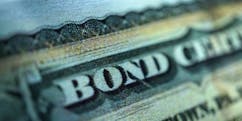10 Best Dividend ETFs Worth Adding to Your Portfolio in 2025
- What Are the Best Dividend ETFs to Invest In?
empty
empty
empty
empty
empty
empty
empty
empty
empty
empty
- What Are Dividend ETFs?
empty
empty
- How Do ETFs Dividends Work?
- What to Consider When Buying ETF Dividends to Invest In:
empty
empty
empty
empty
empty
empty
- Frequently Asked Questions
- Final Thoughts
The Top Dividend ETFs 2025:
- Invesco FTSE RAFI US 1000 ETF
- Invesco S&P Ultra Dividend Revenue ETF
- SPDR Portfolio S&P 500 High Dividend ETF
- Invesco Dow Jones Industrial Average Dividend ETF
- ALPS Sector Dividend Dogs ETF
- Invesco S&P 500 High Dividend Low Volatility ETF
- iShares Core High Dividend ETF
- ProShares S&P 500 Dividend Aristocrats ETF
- Schwab US Dividend Equite Fund
- Vanguard High Dividend Yield ETF
What Are the Best Dividend ETFs to Invest In?
1. Invesco FTSE RAFI US 1000 ETF
- NAV (Net Asset Value) as of 20/10/2023 – $31.15
- 12-month Dividend Yield Rate – 8.06%
- Expense Ratio – 0.39%
- Number of Securities Included – 1,009
This is a large fund that is based on the FTSE RAFI US 1000 index.
With 1,009 securities included, it has excellent diversity – Invesco has chosen firms to include based on their book value, cash flow, and sales performance, as well as their dividend offering.
Invesco funds, in general, have a relatively high expense ratio, and this ETF is no exception. Dividends are paid quarterly, and the rate shown is the 12-month average.
2. Invesco S&P Ultra Dividend Revenue ETF
- NAV (Net Asset Value) as of 20/10/2023 – $35.47
- 12-month Dividend Yield Rate – 4.91%
- Expense Ratio – 0.39%
- Number of Securities Included – 58
When compared to the first ETF on this list, the S&P Ultra Dividend Revenue ETF has a much smaller number of holdings at only 58. This ETF is based on the S&P 900 Dividend Revenue Weighted Index, which selects stocks to include based on rules.
The top 5% of companies in each sector based on dividend payout ratio are disregarded, and then the top 60 across all sectors are reweighted according to the revenue earned by the company. This makes it a lower-cost investment with a decent distribution percentage.
3. SPDR Portfolio S&P 500 High Dividend ETF
- NAV (Net Asset Value) as of 20/10/2023 – $33.70
- 12-month Dividend Yield Rate – 5.34%
- Expense Ratio – 0.08%
- Number of Securities Included – 80
Managed by Schreider’s Law, this ETF is based on 80 of the highest dividend yield companies in the S&P 500 index. It includes companies like Seagate, Hasbro and IBM in the holdings and has performed steadily for many years.
This fund has one of the lowest expense ratios on the market, and with at least 80% of assets invested in the fund, the payouts are regular and reliable.
4. Invesco Dow Jones Industrial Average Dividend ETF
- NAV (Net Asset Value) as of 20/10/2023 – $40.44
- 12-month Dividend Yield Rate – 3.86%
- Expense Ratio – 0.07%
- Number of Securities Included – 28
This is a fund that tracks stocks listed in the Dow Jones Industrial Average Yield Weighted Index.
Assets are chosen based on their 12-month dividend payouts for the last 12 months – so only those that have performed consistently and paid highly are considered.
Although there are relatively few holdings in this fund, the securities included are assessed semi-annually to ensure performance remains high and reliable.
5. ALPS Sector Dividend Dogs ETF
- NAV (Net Asset Value) as of 20/10/2023 – $45.63
- 12-month Dividend Yield Rate – 4.67%
- Expense Ratio – 0.36%
- Number of Securities Included – 50
This ETF consists of the five highest-yielding stocks across 10 industries. These are generally the largest companies in the US and are tracking the S-Network Sector Dividend Dogs Index.
This fund has been traded since 2012 and has seen some excellent returns, although the recent dividend yield has been lower than usual.
6. Invesco S&P 500 High Dividend Low Volatility ETF
- NAV (Net Asset Value) as of 20/10/2023 – $38.21
- 12-month Dividend Yield Rate – 4.76%
- Expense Ratio – 0.30%
- Number of Securities Included – 50
This ETF tracks the performance of 50 companies in the S&P 500 based on their historical performance, particularly their dividend yield and low volatility. These companies offer less risk exposure for the investor who prefers low volatility for a relatively reliable yet diversified investment.
The fund manager recalculates the stocks in the fund twice a year to ensure stability.
7. iShares Core High Dividend ETF
- NAV (Net Asset Value) as of 20/10/2023 – $96.91
- 12-month Dividend Yield Rate – 12.76%
- Expense Ratio – 0.08%
- Number of Securities Included – 75
This is an ETF high dividend yield, and while it has the highest NAV on this list it also offers the highest payout ratio. This ETF is managed to contain 75 relatively high dividend paying US assets, screened for financial health and is offered to investors as a core product for diversification of their portfolio.
The management fee is low for this ETF, so it is well worth considering as it has performed well since its inception in 2011.
8. ProShares S&P 500 Dividend Aristocrats ETF
- NAV (Net Asset Value) as of 20/10/2023 – $85.61
- 12-month Dividend Yield Rate – 2.36%
- Expense Ratio – 0.35%
- Number of Securities Included – 67
This is a fund that focuses on companies that are in the S&P 500 and meet the specific criteria of both paying and growing dividends for at least 25 consecutive years.
While this might mean more volatile equities, consistent performance should be a key consideration when you are looking at investment, especially when combined with steady growth.
9. Schwab US Dividend Equite Fund
- NAV (Net Asset Value) as of 20/10/2023 – $69.29
- 12-month Dividend Yield Rate – 3.70%
- Expense Ratio – 0.06%
- Number of Securities Included – 104
This is a fund that tracks the total return of the Dow Jones US Dividend 100 index; therefore, it is designed to be a relatively high-yielding fund managed by a well-respected financial services company.
Schwab describes this fund as a low-cost offering that focuses on the quality and sustainability of dividends, which is the goal for most investors when working with dividend-paying ETFs.
10. Vanguard High Dividend Yield ETF
- NAV (Net Asset Value) as of 20/10/2023 – $101.21
- 12-month Dividend Yield Rate – 3.26%
- Expense Ratio – 0.06%
- Number of Securities Included – 453
This ETF has a high NAV, but you can invest in it with just a dollar to start with. Because of this, it’s a great first investment for beginners.
As an ETF that focuses on high dividend yield, the companies included in the holdings are chosen from the FTSE High Dividend Yield index; therefore, it mirrors the performance of stocks that are forecasted to have above-average dividend yields.

What Are Dividend ETFs?
ETF Basics
ETFs are exchanged-traded funds, and they are a grouped security that typically tracks something, like an index, a particular commodity or a sector.
They can consist of similar stocks from companies in the same industry, but they can also be more varied for those who want to have a diversified portfolio.
One of the main benefits of choosing an ETF is that they can be bought and sold much like a single stock can, and they can be structured to track anything.
The first ETF that was created and actively traded was the SDPR S&P500, which tracks the S&P 500 index and is still actively traded today. Since then, many different ETFs have been created.
The price of an ETF changes as shares are bought and sold, and this makes them more liquid than a mutual fund – and the multiple underlying assets make trading ETFs a popular choice for those who are looking to diversify their portfolio with a single purchase.
There are several different ETFs available, including:
- Bond ETFs
- Stock ETFs
- Industry/Sector ETFs
- Commodity ETFs
- Currency ETFs
Dividend-Paying ETFs
Dividends are the distribution of a company’s earnings and profits to shareholders at a rate that is determined by the Board of Directors.
Often distributed quarterly, the amount of dividend that shareholders receive depends on the amount of stock they have purchased.
Dividends can be paid out in cash, or they can be reinvested into stock.
Not all companies that offer stocks will pay dividends; some choose to reinvest their profits to help them grow.
Usually, you will find that dividend-paying companies tend to be established, large and often international companies such as banks, oil, gas, health and pharmaceutical.
For the investor, dividend-paying ETFs offer not only an investment that should grow over time but also the opportunity to receive regular payments in cash (or in extra shares of the ETF).
The amount of dividend that is paid is called the “dividend yield”, and this is shown as a percentage of the share price for the fund.
The higher the dividend yield, the more return you will receive as a dividend payment.
How Do ETFs Dividends Work?
ETFs can be passive, which means that they track the performance of an index, a sector or a specific commodity. These are more hands-off funds, which means that they are not actively managed by a financial institution or a wealth management company.
Active ETFs use fun managers who decide which dividend-paying stocks are included in the fund.
The criteria for choosing these can differ from manager to manager, and while these might incur more fees, the idea is that management leads to bigger profits and dividend payouts.
When a fund is created, a decision is made as to what the dividend yield should be, how frequently the dividend is paid (it can be six-monthly or even annually, but is usually quarterly), and how much of the capital invested in the fund is used to support the fund (and pay commission for the fund manager, of course).
Typically, you can expect stocks with higher dividend yields to come from companies that are performing well – especially when they are global conglomerates or blue-chip companies.
However, high-value dividends that are being paid by a company might indicate problems in the future as they are going to be investing less in the business itself.
Buying into a dividend ETF is simple – you will need to use a broker, but the company will manage it on your behalf, and you shouldn’t need to take much action (just make sure you choose the right broker first).
What to Consider When Buying ETF Dividends to Invest In:
The Amount to Invest In
Every person will have different financial goals and will have different investment amounts that they are planning to make.
In many cases, choosing a dividend ETF offers a single exposure to the market with instant diversification, meaning that you can get to your investment goals with just one purchase on the market.
The amount you will invest will depend on your personal circumstances, but remember that investing is a risk, and you may not see returns, and there is a risk to your capital.
Remember, never invest more than you can afford to lose!
The Frequency of the Dividends
Dividend payout frequency in ETFs is the same as for regular shareholders, so they are set by the company’s Board of Directors.
Most dividends are paid quarterly, but some might be monthly, semi-annually, or even yearly, so it is worth knowing when you can expect it.
You will only be eligible for payment at the next disbursement if you have bought in by the ex-dividend date (usually about a week before the payout is due).
The Value of the Dividends
The value of the dividends can vary, much like the total value of the fund, depending on the value of the stocks at the time. This means that your payout can change from quarter to quarter, so it should not be relied upon as a source of income.
Choosing a fund that is based on equities that have shown consistent growth is the most sensible option.
The Risk to the Company
Your own risk appetite will determine which stocks you want to invest in – high risk can mean high reward, but this might not suit all investors.
There are no guarantees when it comes to investing, and even the largest and most well-established companies can suffer from plunging stock prices, which will influence your investment.
The Financial Performance of the Company
Stock prices on the index are affected by many different things, from the individual financial performance of the company to more global issues like political unrest and even natural disasters.
You can use the financial history and performance of a company to gauge whether they are a relatively safe investment or choose a fund that is evaluated regularly to ensure that only the top-performing companies are included.
The Prospective Future of the Company
High dividend yields might satisfy shareholders in the short term, but if a company is not investing at least some of its profits to fuel growth, then the prospective future of the business could be in question.
This is something that you might want to think about if the ETF you are considering includes overly high-yielding dividends, especially in a relatively young company.
Frequently Asked Questions
According to the ETF Database the highest yielding dividend ETF is the Advocate Rising Rate Hedge ETF with a dividend yield of 328.19%. This can be affected by many factors, however, and is currently being liquidated. Other funds offer lower yields but more long-term security.
The best-paying dividend ETF is one that will give a 12% yield (or more), including popular funds from Invesco, such as the Invesco Optimum Yield Diversified Commodity Strategy No K-1 ETF and JP Morgan’s JPMorgan Realty Income ETF.
The iShares Core High Dividend ETF is another good option with a strong dividend yield.
Dividend ETFs are popular with investors because they can create a passive income, and while you can invest enough in the fund to ensure that you get good quarterly returns, it would be unwise to rely on them for your everyday living costs as they are not guaranteed to give value.
Any investment into the financial markets should be considered risky, and although ETFs are a good way to diversify your portfolio, they still have an element of risk that you might not be prepared for.
Although most dividend-yielding ETFs pay quarterly (like the underlying securities), there are some that pay monthly, including Global X SuperDividend ETF, Global X SuperDividend US ETF and the Invesco S&P 500 High Dividend Low Volatility ETF.
Investing a specific amount in a single dividend stock might yield higher dividends, but it is considerably riskier than diversifying and investing the same amount in an ETF that includes that stock in the holdings.
The risk is spread across different securities, often across different sectors, which means that if the prices drop on one stock, you should be buoyed by the performance of assets in other areas.
With average dividend yields around 4-5%, you need to reinvest dividends for a while to build a passive income of $500 a month – unless you are investing six-figure sums into your portfolios to start with. This compounding value will add more yield, but it does take a while to build up.
Final Thoughts
Choosing ETFs for your portfolio is a great way to not only simplify your investments but also to diversify – reducing the overall risk. However, you can use dividend-paying ETFs to add passive income to your investment, paying regularly throughout the lifetime of your holding.
Choosing the right dividend paying ETF means understanding how much you will need to invest, what the ETF is tracking, and what yield you can expect (and how often it is paid).
Above are some of the things that you need to consider before investing in a dividend ETF, but always remember to never invest more than you can afford to lose.






